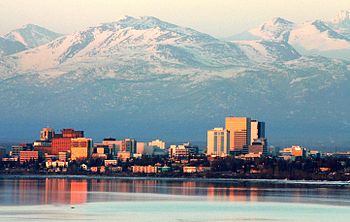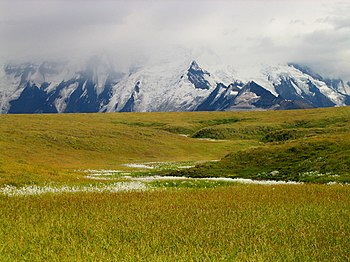Showing posts with label alaska fishing. Show all posts
Showing posts with label alaska fishing. Show all posts
Wednesday, July 29, 2020
Observations from Lower Susitna River Personal Use Dip Net Fishery
On Wednesday July 22, Gary Brell, Frede (my wife), Chuck Ashmun and I boated from Deshka Landing to the Lower Susitna River Personal Use Salmon FIshery. Our boat ride down the Susitna River went smoothly, however, I have boated this stretch of river several times and am familiar with it. Three comments I would make concerning the river:
One: Wear Your PFD
I wore a life vest the entire time — both while we were traveling and while we were fishing — I removed it only while filleting fish. The lower Susitna River is a cold deceptively fast moving glacial river. If a person should fall in the river, wearing a Personal Floatation Device could easily save a life.
Two: Learn to Operate Your Boat Somewhere Else
With that thought in mind I would also say be sure you have all of your boating safety gear with you and know how to use it. It is always better to bring more than enough fuel. For my open guide boat with a 90 horse outboard jet I brought 27 gallons of fuel and had over 6 gallons in reserve after making the round trip and fishing from the boat for several hours. For an experienced boater the route is not all that difficult, however, you should know what to do if at some point you loose power.
Tuesday, July 7, 2020
Trump Administration Facing Hurdles Opening Alaska and other Areas to Oil and Gas
 |
| The Proposed Pebble Mine project is one of the extraction industry efforts drawing the ire of outdoorsmen, conservationists, and the environmental community. |
However, as we in the U.S. are prone to doing, we may have swung the pendulum way too far towards easing regulations and restrictions on these extraction industries. If you enjoy the outdoors and want your kids to be able to enjoy what you get to experience, we may want to ease up a little...
In a surprise decision Monday, a federal judge ruled that the Dakota Access pipeline — which Trump approved within a month of taking office — must be shut down by Aug. 5, saying federal officials failed to carry out a complete analysis of its environmental impacts. The day before, two energy companies behind the controversial, 600-mile Atlantic Coast Pipeline abandoned their six-year bid to build it, saying the $8 billion project has become too expensive and faces an uncertain regulatory environment. And an April decision by a federal judge in Montana dealt a blow to the Keystone XL pipeline and raised questions about whether the U.S. Army Corps of Engineers will have to conduct more extensive environmental reviews for other projects.
Sunday, April 19, 2015
Politics at the Anchorage game and fish committee
 |
| . (Photo credit: Wikipedia) |
One-third of the committee that represents the people of Anchorage at the boards that regulate hunting and fishing in Alaska resigned this week, saying their advice is consistently ignored.
Six of the Anchorage Fish and Game Advisory Committee’s 17 members resigned Tuesday at an annual meeting. Two members serve as alternates.
Saturday, April 19, 2014
Mercury in Fishes Study Released - Measurable Levels Detected in Alaska National Parks
 |
Fish sampled in four Alaskan national parks have tested positive for mercury and in some cases exceeded State of Alaska unlimited human consumption thresholds for women and children.
The testing was part of a multi-year U.S. Geological Survey and National Park Service study of fish in remote, high elevation lakes and streams in 21 national parks across 10 western states and Alaska. Mercury was found in all fish sampled though levels of the chemical harmful to fish, other wildlife and humans, varied.
"Although fish mercury concentrations were elevated in some sites, the majority of fish across the region had concentrations that were below most benchmarks associated with impaired health of fish, wildlife, and humans. However, the range of concentrations measured suggest that complex processes are involved in driving mercury accumulation in these environments and further research is needed to better understand these processes, and assess risk," said USGS ecologist Collin Eagles-Smith, the lead author of the publication.
The Alaska surveys took place at Denali National Park and Preserve, Wrangell-St.Elias National Park and Preserve, Lake Clark National Park and Preserve and Glacier Bay National Park and Preserve. Mercury concentrations were measured in lake trout, arctic grayling, kokanee, Dolly Varden and northern pike.
Some fish in Wrangell-St. Elias National Park and Preserve and Lake Clark National Park and Preserve exceeded thresholds recommended by both the State of Alaska and the Environmental Protection Agency for unlimited human consumption by women and children.
State of Alaska human consumption thresholds start at 150 parts per billion. Lake trout, with average concentrations as high as 417 parts per billion were found in one lake in Wrangell-St. Elias National Park and Preserve. The average concentration in lake trout in Lake Clark was 365 parts per billion. Mercury levels were low in Denali National Park and Preserve and Glacier Bay National Park and Preserve.
Lake trout are a relatively long-lived fish species at the top of the food web, and as such are more likely to accumulate mercury and other toxins over their lives than other species of fish. They are not consumed in great quantities by either sport or subsistence fishermen so the risk to people is likely low, but variable given location and frequency of fish consumption. The extent of the effects on fish-eating birds and mammals that depend on lake trout for survival is unknown.
Fish continue to be a nutritious food source. Many fish species, including salmon, are low in mercury. Women who may become pregnant and parents should reference fish consumption guidance developed by the State of Alaska at http://www.epi.
The study, "Mercury in fishes from 21 national parks in the Western United States – Inter and intra-park variation in concentrations and ecological risk," is available online at http://pubs.usgs.gov/of/

Monday, September 19, 2011
WRANGELL- ST. ELIAS SUBSISTENCE RESOURCE COM M ISSION TO M EET I N NORTHWAY AND TANACROSS
 Image via Wikipedia
Image via WikipediaThe Wrangell-St. Elias National Park Subsistence Resource Commission will meet in
Northway on Thursday, October 6, from 9:30 AM to 5 PM, and in Tanacross on Friday, October
7, from 9 AM until the completion of business, to consider a range of issues related to
subsistence hunting and fishing in the park. Additional information may be obtained by calling Barbara Cellarius at park headquarters, 822-7236.

Subscribe to:
Posts (Atom)


